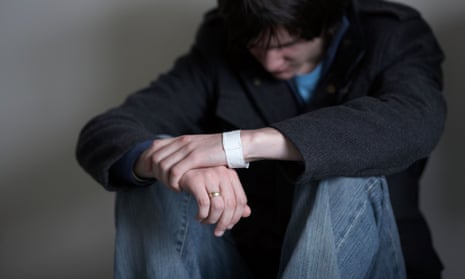This week saw the deputy prime minister, Nick Clegg, appeal for the widespread adoption of a “zero suicide” campaign in the NHS. This is admirable, but a concerted effort to prevent people from taking their own lives would be more effective if we understood why suicide is a particularly male problem. It’s known as the “gender paradox of suicidal behaviour”.
Research suggests that women are especially prone to psychological problems such as depression, which almost always precede suicide. In western societies, overall rates of mental health disorders tend to be around 20-40% higher for women than for men.
Given the unequal burden of distress implied by these figures, it is hardly surprising that women are more likely to experience suicidal thoughts. The Adult Psychiatric Morbidity in England 2007 survey found that 19% of women had considered taking their own life. For men the figure was 14%. And women aren’t simply more likely to think about suicide – they are also more likely to act on the idea. The survey found that 7% of women and 4% of men had attempted suicide at some point in their lives.
But of the 5,981 deaths by suicide in the UK in 2012, more than three quarters (4,590) were males. In the US, of the 38,000 people who took their own lives in 2010, 79% were men.
(These are startling figures in their own right, but it is also worth remembering just how devastating the effects of a death by suicide can be for loved ones left behind. Studies have shown, for example, an increased risk of subsequent suicide in partners, increased likelihood of admission to psychiatric care for parents, increased risk of suicide in mothers bereaved by an adult child’s suicide, and increased risk of depression in offspring bereaved by the suicide of a parent.)
So if women are more likely to suffer from psychological problems, to experience suicidal thoughts and attempt suicide, how do we explain why men are more likely to die by suicide?
It’s principally a question of method. Women who attempt suicide tend to use nonviolent means, such as overdosing. Men often use firearms or hanging, which are more likely to result in death.
In the UK, for instance, 58% of male suicides involved hanging, strangulation or suffocation. For females, the figure was 36%. Poisoning (which includes overdoses) was used by 43% of female suicides, compared with 20% of males. A similar pattern has been identified in the US, where 56% of male suicides involved firearms, with poisoning the most common method for females (37.4%).
Less is known about the choice of methods in attempted suicides that don’t lead to a fatality. A European study of over 15,000 people receiving treatment after an attempt did find that men were more likely than women to have used violent methods, but the difference was less pronounced.
Why do methods of suicide differ by gender? One theory is that men are more intent on dying. Whether this is true remains to be proven, but there is some evidence to back up the idea. For example, one study of 4,415 patients admitted to hospital in Oxford following an episode of self-harm found that men reported significantly higher levels of suicidal intent than women.
Another hypothesis focuses on impulsivity – the tendency to act without properly thinking through the consequences. Men are, on the whole, more likely to be impulsive than women. Perhaps this leaves them vulnerable to rash, spur-of-the-moment suicidal behaviour.
Not all suicides are impulsive, of course, and even for those that are, the evidence is mixed: some studies have reported that men are more susceptible to impulsive suicidal acts; others have found no such thing. What we do know is that alcohol increases impulsivity, and that there’s a clear link between alcohol use and suicide. Studies have found that men are more likely than women to have drunk alcohol in the hours before a suicide attempt, and that alcohol problems are more common in men who die by suicide than in women.
The third theory is that, even in their choice of suicide method, males and females act out culturally prescribed gender roles. Thus women will opt for methods that preserve their appearance, and avoid those that cause facial disfigurement. Again, the evidence is patchy. But a study of 621 completed suicides in Ohio found that, though firearms were the most common method used by both sexes, women were less likely to shoot themselves in the head.
Clearly much work needs to be done before we arrive at a reliable picture of what’s going on here. But it is striking that suicide, like mental health in general, is a gendered issue – it sometimes affects men and women in radically different ways. That’s a lesson we need to take on board in research, clinical care and prevention efforts alike.
Follow @ProfDFreeman and @JasonFreeman100 on Twitter
If you are having suicidal thoughts, contact the Samaritans 24-hour helpline on 08457 90 90 90 in the UK. In the US, the National Suicide Prevention Hotline is on 1 800 273 8255. In Australia, the crisis support service Lifeline is on 13 11 14
